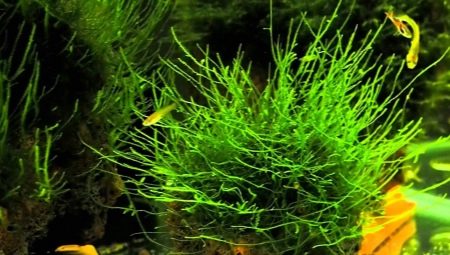For the design of aquariums in homes, offices or public buildings, various plants are used in conjunction with sea and river inhabitants. Among the variety presented today, aquarists prefer to acquire moss, represented by different species, to decorate their tanks.
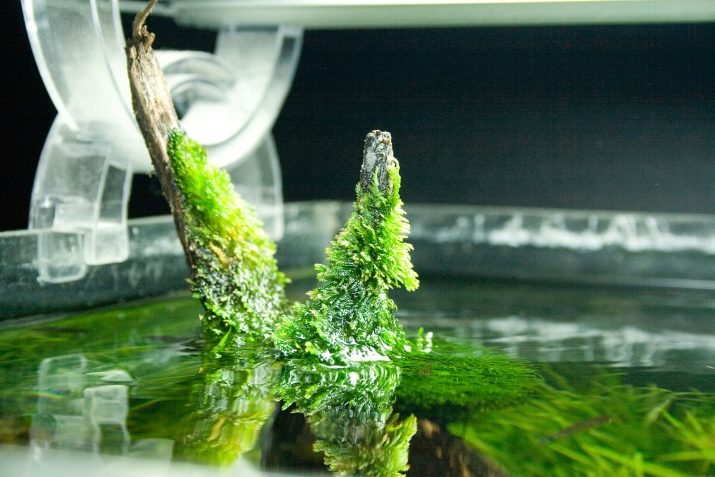
Features
Among the flora, which can be decorated with modern aquariums, not the last place is occupied by various species of mosses.
This is due to the unique features of such cultures to perform a decorative function with unpretentiousness in care, as well as a large species and external variety.
Such features allow without any difficulties to realize any, even the most creative ideas for designing containers with marine inhabitants or without them, creating unique compositions from attractive greenery.
It is believed that the first species of moss appeared more than 400 million years ago. Currently, such plants are classified by specialists into 3 main classes, namely:
- Hepatic
- Mossy;
- Antotserotnye.
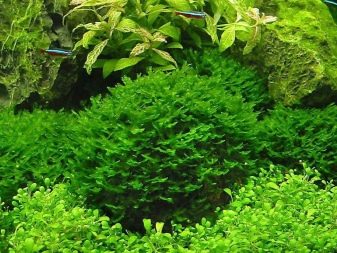
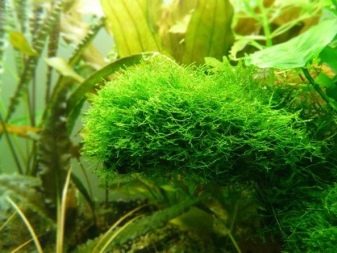
Aquarists use all kinds of mosses to create compositions. The following characteristics distinguish them from lichens or algae:
- aquarium moss has a reproductive system for reproduction;
- in the natural cycle of cultures, several morphological generations can develop at once;
- they have no root system.
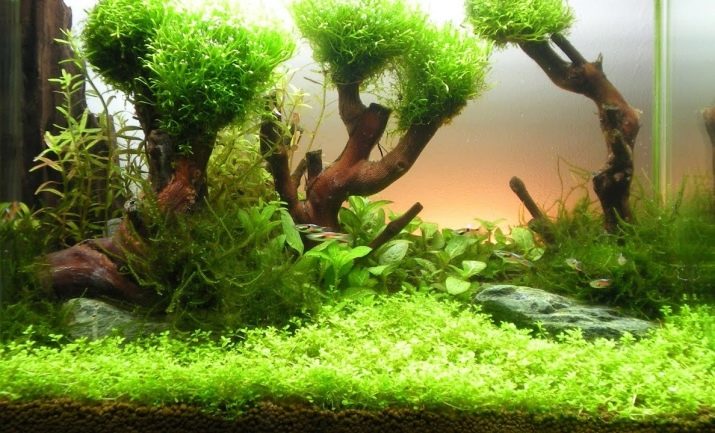
Unpretentious green culture has a number of undeniable advantages, thanks to which it is in demand for decorating open artificial ponds and aquariums.
- Moss is a plant that quickly undergoes the process of adaptation to various conditions, so even a beginner can cope with its cultivation. In addition, most of the species are quite unpretentious in terms of content.
- It is not necessary for mosses to maintain a 12-hour year-round lighting in the tank; they do not need to use fertilizers. That is why the plant can be planted even in shaded areas of the aquarium or in case of heat deficiency. The culture is capable of extracting all important micro- and macrocells from the environment, and the absorption process takes place over the entire surface of the moss, and not just the underground or aboveground parts.
- The external natural attractiveness of such crops makes it possible to make a reservoir or reservoir similar in appearance to environmental conditions. This feature has a positive effect not only on the harmony and integrity of the composition, but also on the health of the aquatic inhabitants contained in the aquariums.
- The process of updating mosses occurs rather quickly and independently, as old cultures die off, thanks to spores, leaving new plants in their place.
- Different types of mosses are an excellent refuge for many small species of fish or fry. In addition, many aquatic inhabitants use it for spawning.
- If necessary, moss, together with the material or object on which it is attached, can be easily transferred to another place, which is not always possible with plants that have a root system.
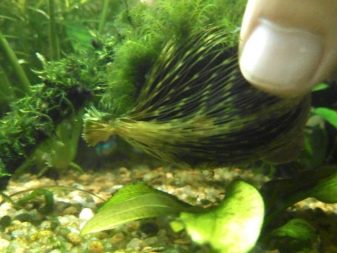
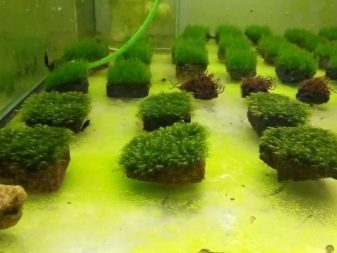
Kinds
More recently, not so many types of moss were used to design aquariums, however, in light of the increasing popularity of this type of decor, more and more varieties of it are currently being used. Among them are the following.
Key moss
Fontalinis is the second name of the culture, which is distributed almost throughout the world. The plant has curly stems with lots of small leaves. The color of the decorative culture may vary, to a greater extent it depends on the intensity of illumination, as well as the type of soil in the tank. There are options for rich green and red moss. It can be kept in aquariums and open artificial reservoirs. As a rule, this species is usually planted in the foreground.
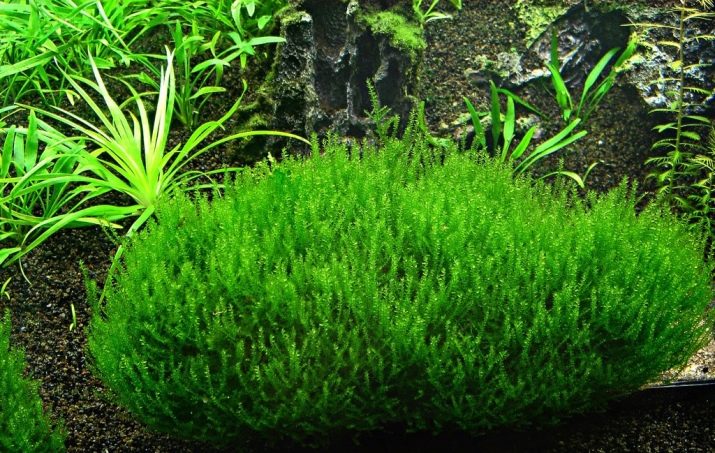
Weeping
The name is due to the external structural features of the branches, which grow downward, repeating the structure of the weeping willow.
Moss has Chinese roots, stands out for its small size, so it is extremely rare in height reaches 50 mm. It is recommended to be planted on snags; it is well attached to stones.
Not picky in terms of temperature for maintenance, therefore Feels good in the range from +15 C to +28 C.

Christmas
The culture owes its name to the original form of leaves that are formed on the stems of moss - when viewed, they will resemble needles from a conifer. The variety is distinguished by a high level of attractiveness, therefore it is quite in demand for the design of aquariums and artificial reservoirs. According to the description, the plant develops extremely slowly, not demanding on the conditions of detention, if the water temperature in the tank is less than +22 C, then the moss will stop in its growth and development.
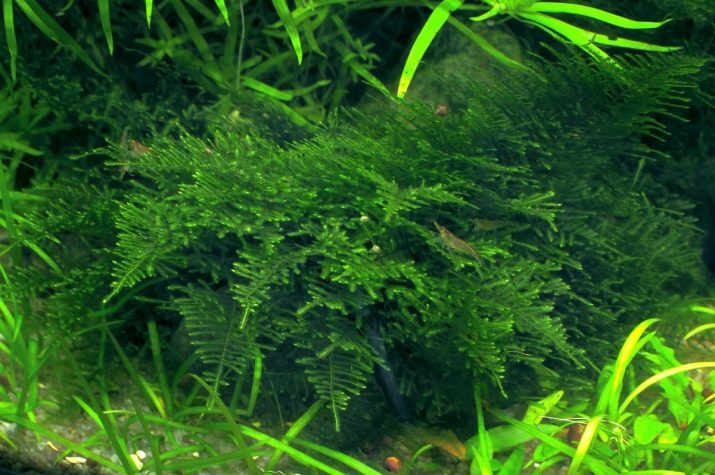
Leptodicium coastal
The culture consists of many shoots that are formed at a great distance from each other. The stems grow strictly in the vertical direction, due to which it will be possible to create a beautiful living composition in the aquarium, which stands out for its airiness. This variety can be grown in soil, on stones or wood, it feels good in stagnant water or in a liquid with a minimal flow.
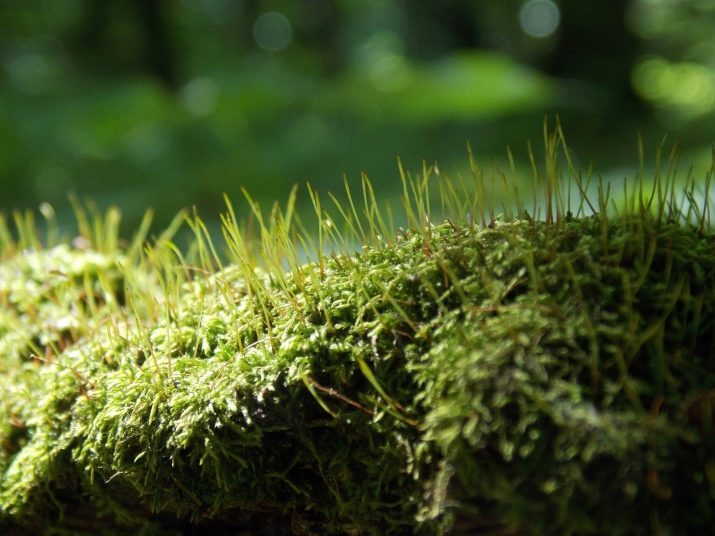
Lomariopsis linearus
The moss will be light in color, widespread in the wild in Asian countries, as a rule, aquarists prefer to fix it with a thread or net to the snag at the bottom, which allows the culture to adapt as quickly as possible and take root in the tank. Japanese moss grows slowly, therefore, it will not require too frequent adjustment of the created composition.
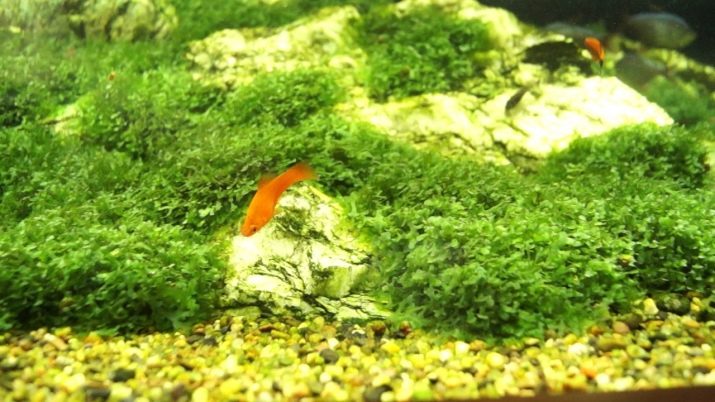
Javanese moss
A popular option that is suitable for placement in an aquarium with most breeds of ornamental fish. By external signs, it stands out with its thin stems, covered with a large number of small leaves located very close to each other.
Moss can be attached directly to the substrate, while the stems can develop both in the vertical and horizontal directions, which can form an image of a certain random arrangement of shoots, simulating a flame.
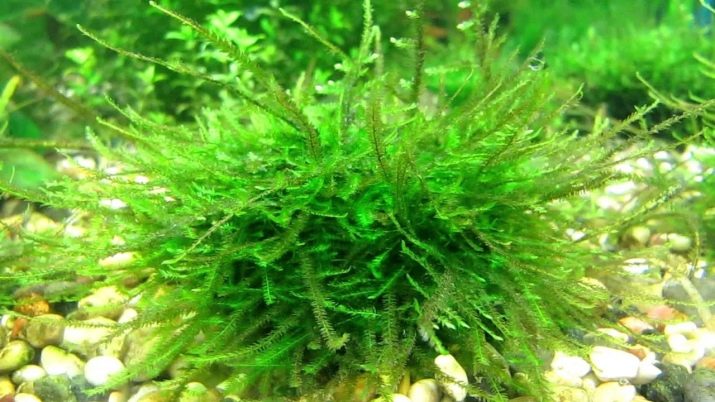
Richia
By structure, such mosses stand out for their round shapes, they can have different sizes, while the color of the cultures is notable for its rich colors. Moss lacks a root system, stems and leaves, the thickness of the twigs is only 10 mm. In order to reduce the growth rate of the culture during breeding, it is recommended to cover the aquarium with transparent glass. You can adjust the color of the moss by the level of illumination, some conditions will make it white.
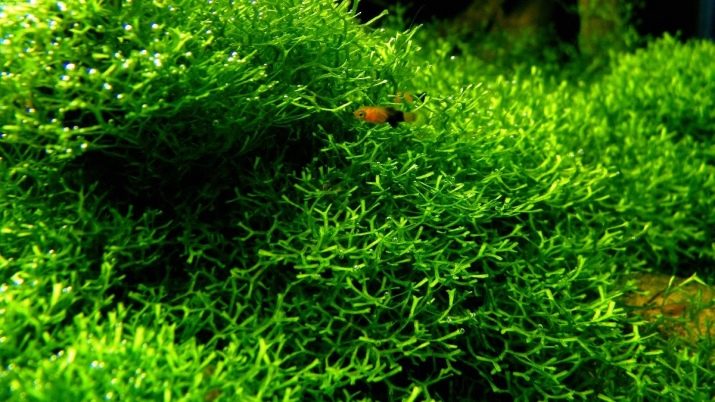
The list of mosses used for breeding in aquarium conditions is not limited to the above species, today, no less attractive options such as sphagnum are also used. Also popular:
- String;
- Bubble;
- Phoenix;
- Cameroon.
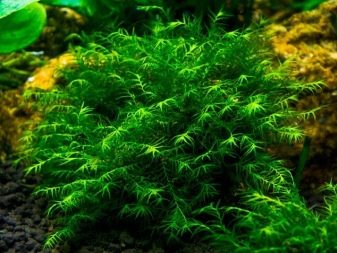
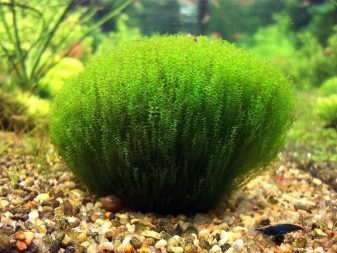
How to choose?
To create a beautiful and comfortable composition of mosses in an aquarium, it is recommended to adhere to the following recommendations.
- For an artificial aquatic environment with river or sea inhabitants, it is allowed to use species of such useful and beautiful cultures that are different in structure. Most of them perfectly and quickly adapt to the prevailing conditions, so the owner of the aquarium or artificial pond will not need to make special efforts to care for the plants.
- Moss does not grow too rapidly, so the composition created once in the tank will retain its original shape and appearance without frequent corrections for quite some time. This point will allow even beginners to use it. That is why the creation of decor inside the tank should be approached thoroughly.
- Such a culture can be attributed to the universal, as it can create a beautiful and natural design that is in perfect harmony with other aquarium cultures and inhabitants. That is why varieties can be selected based on personal taste preferences.
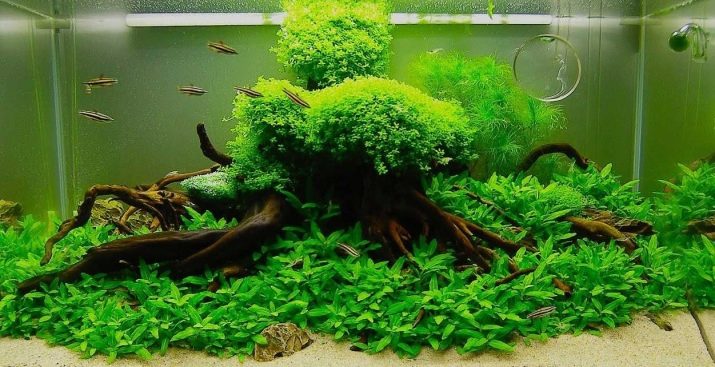
How and where to plant?
To achieve this goal, concerning the breeding of moss at home, it is worth considering that such crops independently and fairly quickly attach to any surface. The owner of the aquarium will only need to additionally fix the plant in the selected place, using nylon thread or any other material for this. It is allowed to use fishing line or medical superglue.
The place for growing moss in the tank is selected based on the total composition. In general, this culture is undemanding to lighting conditions, therefore it can be grown even in corners where lighting penetrates to a minimum.
Mosses go well with ferns or algae. Almost all types of mosses are suitable for joint keeping with fish.
You can mount the moss directly to the bottom so that it creates a living carpet. In addition, it is permissible to use the culture for placement on snags, wood and other objects inside the aquarium.
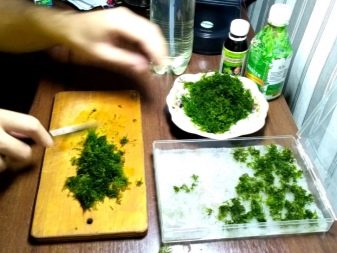
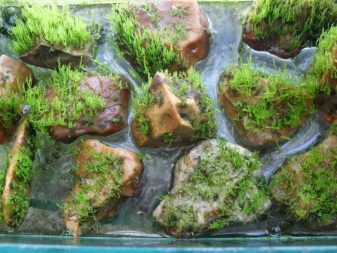
How to contain?
Despite the fact that today there are a large number of species of such aquarium culture, General conditions regarding cultivation will be the same.
- The optimum temperature for the development and attractive appearance of the moss will be a range from +18 C to 28 C. Taking into account the peculiarities of the content of other cultures and inhabitants of the aquarium, these indicators can be adjusted.
- In order for the plants to grow well, special attention should be paid to the cleanliness of the aquarium. This applies not only to the state of water, but also to the presence of various debris, fish waste products, etc. Garbage must be disposed of in a timely manner.
- To make the composition harmonious, it is recommended to remove new shoots from mosses in a timely manner, since the appearance of young branches will contribute to the death of old ones.
- It is best to grow moss in aquariums containing soil. Since its presence is regarded by cultures as a natural filter, which will be impossible to replace with something else. However, its amount in the tank should be deliberate, which will avoid excessive accumulation of nitrites and nitrates.
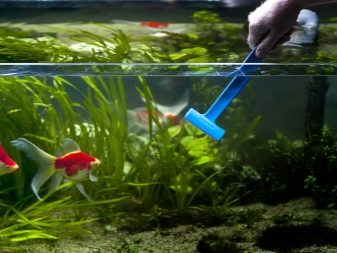
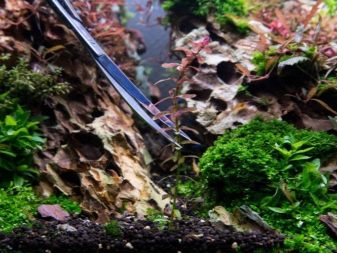
How to propagate?
It will be possible to get a new culture at home by dividing an adult plant, using not only shoots, but also a thallus. Usually, overgrown moss is divided in half, then the new culture is fixed in any convenient way at the chosen place, providing dim lighting there. After a while, it adapts and starts up rhizoids. Also used to obtain a new plant a natural spore method that does not require human involvement.
Spores germinate on a new surface, after which a new aquarium bush is formed there, which can be left in the same place or rooted in another.
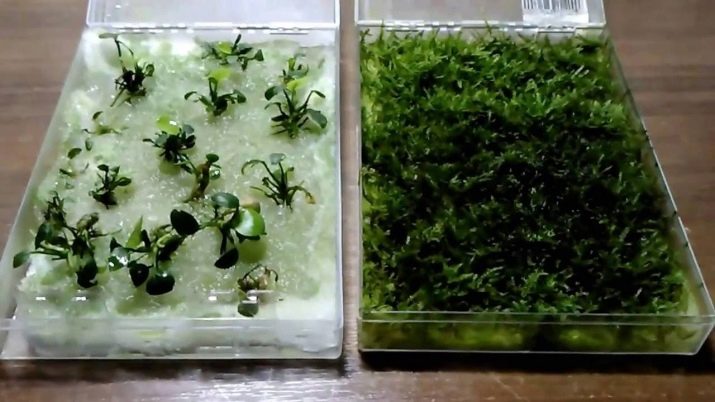
Possible problems
Some novice aquarists may experience the following maintenance problems.
- It is worthwhile to refrain from growing giant algae and mosses. This is due to the fact that such cultures are direct competitors.
- To avoid eating mosses by the inhabitants of the aquariums, it is not necessary to grow a culture with mollusks, since for them this plant is food. This also applies to herbal fish.
- The lack of soil can adversely affect the development of mosses. Despite the fact that the plants do not have a root system, beneficial bacteria live in the soil, helping to decompose the organic matter in the tank into safe elements that will not harm the flora and fauna inside.

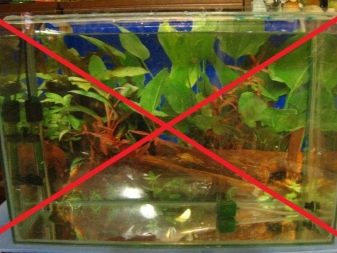
See the master class on fixing moss on any surface.
